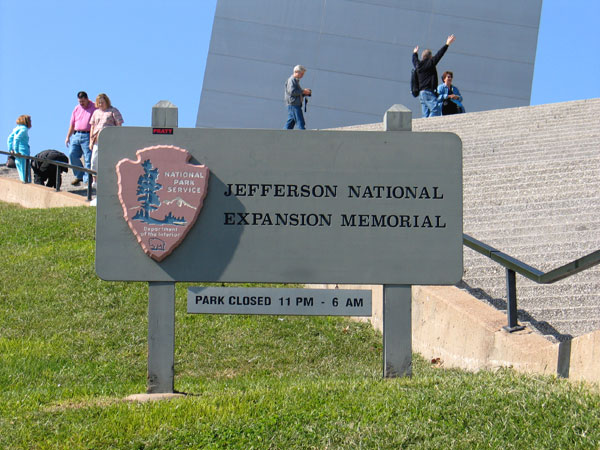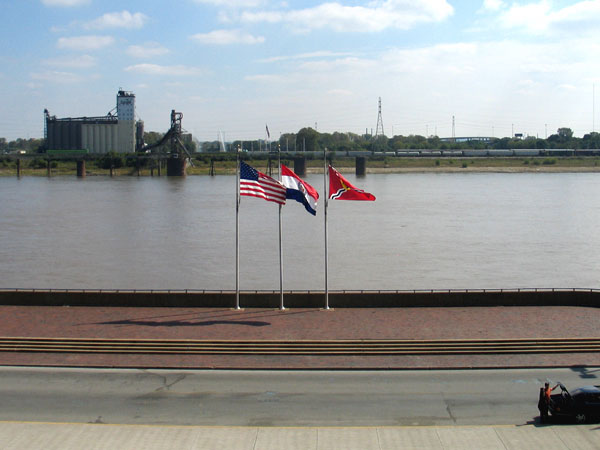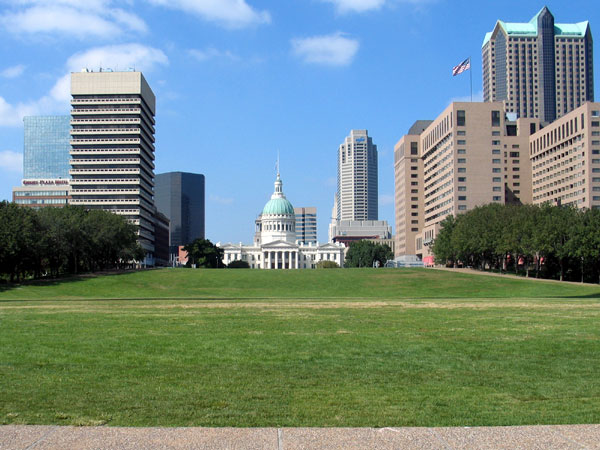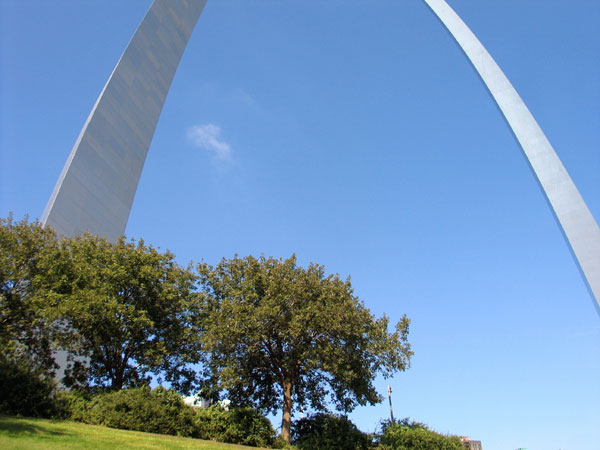C) The Arch

Not long ago, I visited St. Louis. As I first entered my hotel room, its window framed an unremarkable nighttime urban vista. Nineteen stories below, two venerable bridges spanned the Mississippi. On the right, on the opposite bank, a modern-day grain elevator owned by an agribusiness conglomerate dominated a dreary postindustrial skyline. In the center, demanding all attention, were the gaudily flashing lights of two riverboat casinos. Yet as I walked closer to the window to draw the curtains against the casinos' glare, Eero Saarinen's Gateway Arch suddenly entered the picture from the right. To take in its vastness, I had to shift my line of vision in a way that made the bright lights and bridges disappear. From a perch about one-third as high as the arch, I gazed through it facing east, toward the country that early nineteenth-century folks who lit out for the territories thought they had left behind.

Saarinen intended his monument to be viewed from the opposite direction, facing west, from the Illinois side of the river. But unless they can walk on water, all who actually visit must approach it the way I looked through it, facing east. They find that the arch is rooted in an urban national park, the Thomas Jefferson National Expansion Memorial. If they descend into the earth beneath its base to board a tram to the top, they discover a Museum of Westward Expansion that movingly portrays the impact of Euro-American conquest on Native Americans. Aboveground, though, the museum is invisible. Nothing can be seen except the gleaming arch itself and, behind it, green terraces that rise from the riverbank to the dome of the old St. Louis Courthouse, which, viewed from Illinois, the arch was designed to frame. It is not just any courthouse. There, in 1847 and again in 1850, an enslaved African-American couple named Dred and Henrietta Scott sued for their freedom. Although the second trial's jury of local Whites decided in their favor, every higher level of a judicial system devoted to the protection of American liberties refused to agree. In 1858, speaking for a Supreme Court more deeply divided on why than on whether freedom must be denied, Chief Justice Roger Brooke Taney declared that people like the Scotts were "regarded as being of an inferior order" who "had no rights the white man was bound to respect."

Haunting courtroom; subterranean museum; triumphal arch dominating both. Perhaps no other plot of ground in the United States more eloquently symbolizes how freedom and unfreedom, expansion and dispossession, entwined to create the nation's story than does this park named for a president whose own life so profoundly wove together the same conflicting strands. Part of that national story is the persistent idea that the west was a land of new beginnings. Did not Jefferson famously declare "that the earth belongs in usufruct to the living; that the dead have neither powers nor rights over it"? Yet those who poured through St. Louis in the early 1800s could not so easily abandon their past, and neither could Jefferson's nation. Trends that played themselves out west of the Mississippi grew from three hundred years' experience in the east. Between the early sixteenth century and the early nineteenth, ugly patterns of racial antagonism took root, but the course of their growth was not nearly so straightforward as might be suggested by the old saying about Pilgrims who fell first on their knees and next on the aborigines. Whites and Indians had to learn to hate each other - had even to learn that there were such clear-cut "racial" categories as "White" and "Indian" - before "westward expansion" across a steadily advancing "frontier" could become the trajectory for a nation that was itself a belated result of the same learning process. Perhaps the strangest lesson of all was that in the new nation Whites were the ones entitled to be called "Americans." Indians bizarrely became something else. (1-2)
Facing East from Indian Country (2001)
Daniel K Richter

BACK // FORWARD // TABLE OF CONTENTS